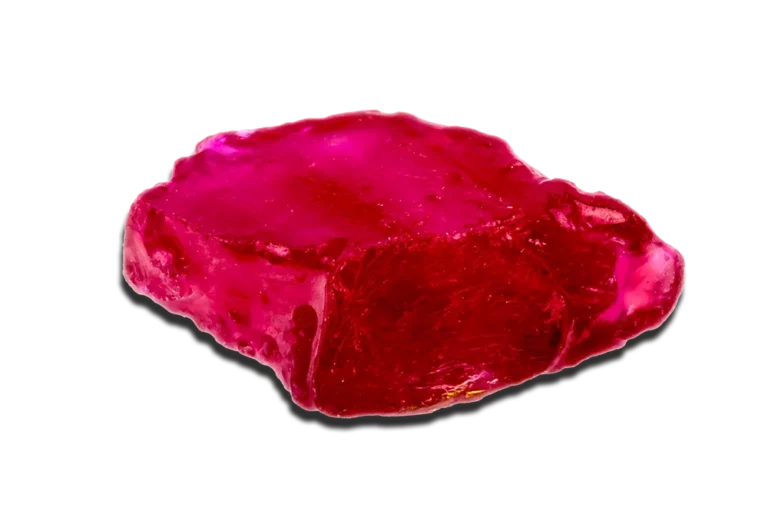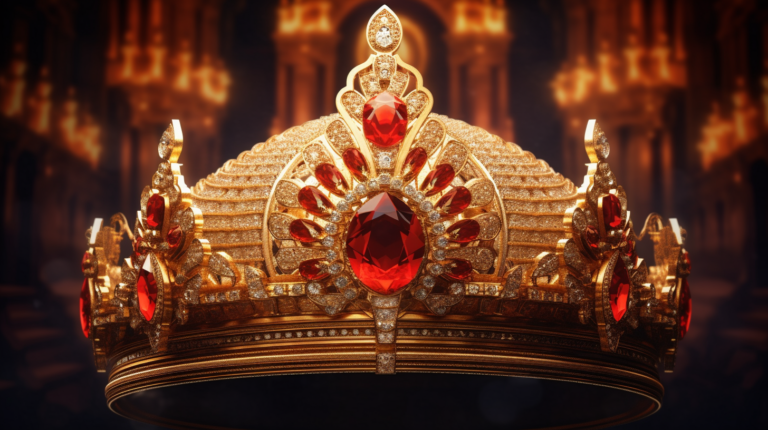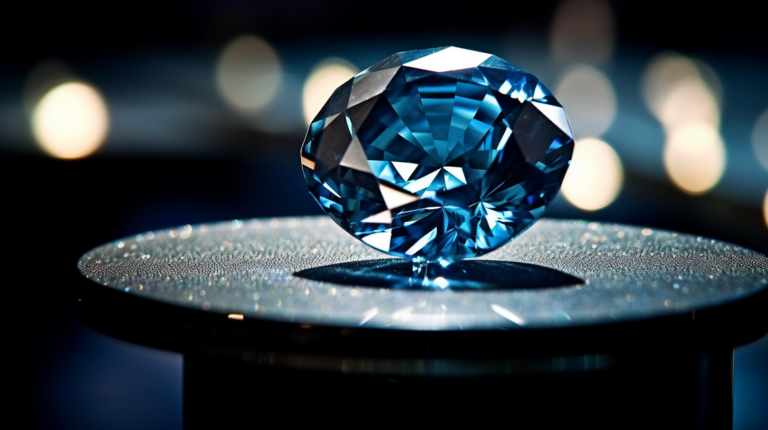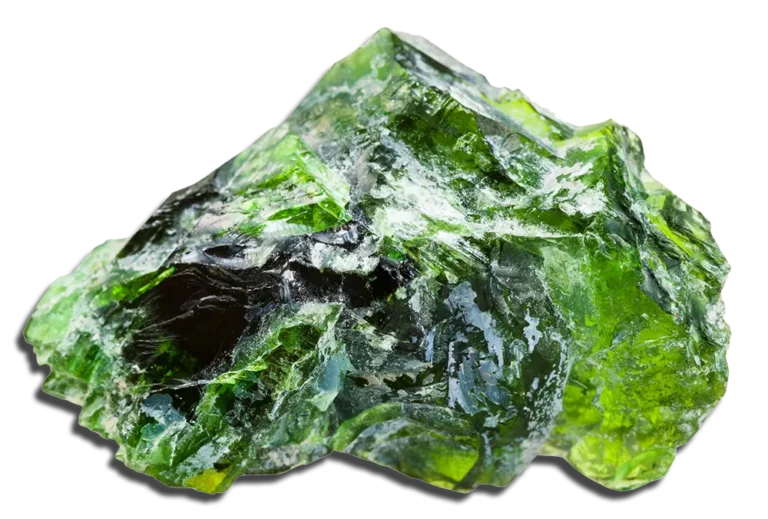Grandidierite Stone: Properties, Benefits & Meanings
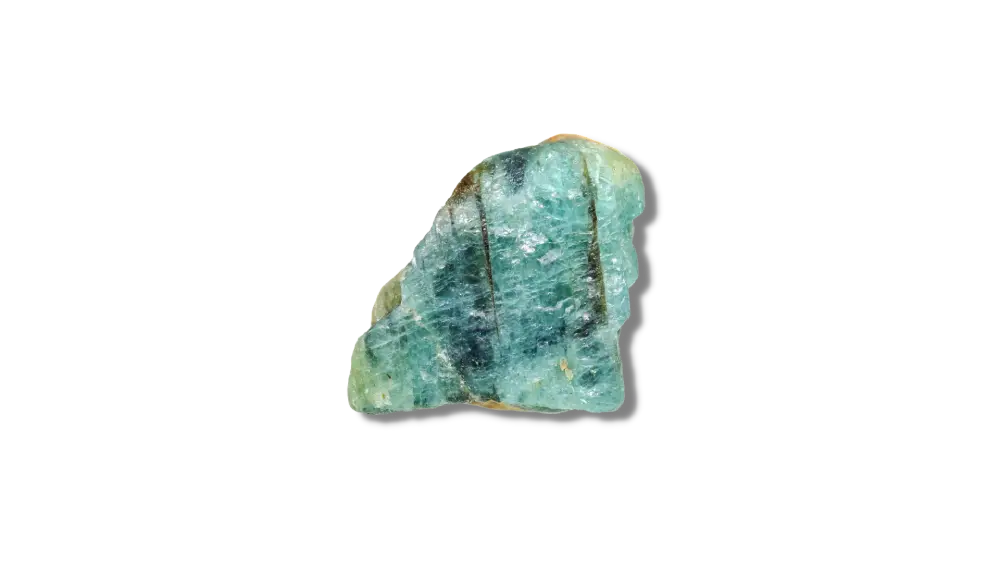
Grandidierite Stone Overview
Grandidierite stone is a rare gemstone that was discovered in the late 19th century. It appears in different colors when viewed from different angles, making it a unique stone to add to your collection.
The coloration of Grandidierite ranges from blue to green but can also be yellow or white when viewed from certain angles. Due to this property, this gemstone is often used in jewelry. This article will take a look into the properties, meanings, and uses of the Grandidierite stone.
What is Grandidierite?
Grandidierite is a relatively new gemstone that has only recently been discovered. It was first found in Madagascar, and so it is sometimes called Malagasy jade. The rarity of this stone is why it is sought after by many collectors, because of which it is relatively expensive.
Grandidierite stones are primarily related to the Heart chakra. They are known as stones of friendship and love and are said to have many powerful abilities.
Pronunciation
The pronunciation for this stone is (gran·di·dierite).
Discovery
Alfred Grandidier was a French naturalist and explorer in Madagascar. He discovered the mineral in 1902 and named it Grandidierite after himself.
Grandidierite stone is distinct from other minerals with similar chemistry and crystal structures, so it has been given its own mineral species name: Grandidierite-1A (Grt 1-A).
Grandidierite Stone Appearance
Grandidierite is a green-blue mineral with a monoclinic crystal system. Most gem-grade Grandidierite is transparent or translucent, with a luminescence that ranges from pale blue to deep blue.
Grandidierite gets its beautiful color due to the presence of Magnesium (Mg) and Iron (Fe). Higher iron content results in a deeper blue color. Because it’s so rare, Grandidierite can be challenging to find in pristine conditions.
Most mined Grandidierite stone also contains eye-visible inclusions. Inclusions are small crystals or minerals that are trapped inside larger crystals. Common Grandidierite inclusions include crystals such as monazite, apatite, and zircon.
Grandidierite crystals are sometimes used as gemstones cut into cabochons or faceted stones because they are attractive when polished.
Its distinguishing feature is that Grandidierite stone has trichroic pleochroism. Trichroic pleochroism is the property of some minerals to show different colors when viewed at different angles under polarized light. For example, viewing from different angles can appear dark green, colorless/pale yellow, and dark blue-green.
Where can Grandidierite be found?
Grandidierite is found in:

Grandidierite Stone Formation
Grandidierite is a rare mineral that forms in pegmatites. Pegmatites are igneous rocks that form within the crust of the Earth at high temperatures and pressures. They contain minerals that crystallize from magma, the molten rock below the surface of the Earth.
Pegmatites are intrusive rocks that form under pressure deep inside the Earth’s crust, as opposed to extrusive rocks like basalt or granite, which form on land near the surface.
Pegmatites are often found near granite intrusions, forming from magma that cooled slowly beneath a thick layer of granite rock at depth. This process allows mineral crystals to grow more extensively than in most other types of stones.
Grandidierite stone is often found in pegmatite pockets with other minerals like lepidolite, quartz, and feldspar.
Grandidierite vs. Lazulite
The two stones have a lot in common. Both are mined from Madagascar and are rare, with just a few tons of each mined annually. They’re both also blue and translucent, but that’s where the similarities end.
Lazulite is a much softer stone than Grandidierite, so it can be faceted like other gems from corundum. However, Grandidierite has good cleavage in two directions, which makes it difficult to cut into faceted stones. It is mostly only cut into cabochons.
The most important difference between Grandidierite and lazulite is their chemical composition: Grandidierite contains aluminum oxide (Al2O3), while lazulite contains magnesium oxide (MgO). This makes for a much rare find when mining for either material!
What are the Physical Properties of Grandidierite
It has the following properties:
| Chemical Name | Magnesium aluminum borosilicate. |
| Formula | (Mg, Fe2+)(Al,Fe3+)3(SiO4)(BO3)O2 |
| Color | Bluish green, greenish blue |
| Hardness (Mohs scale) | 7.5 |
| Refractive Index | 1.583-1.639 |
| Fracture | Uneven |
| Luster | Vitreous, Pearly |
| Specific Gravity | 2.98 – 2.99 |
| Transparency | Transparent, Translucent |
Rarity
Grandidierite stone is one of the rarest gemstones formed in the Earth’s mantle, surpassing precious stones such as diamonds and sapphires.
It is counted amongst the top five rarest gemstones discovered. Most Grandidierite specimens come from Madagascar, although they can also be found in other parts of Africa and Australia.
Grandidierite stone has been known to have a blue-green color during its initial stages, ranging from light sky blue to deep green in polished forms.
It’s a relatively recent discovery and is not as well-known as some other minerals. However, it is gaining popularity due to its beautiful color palette, which ranges from light green to yellowish-green to turquoise.
In addition, its rarity makes it an attractive option for collectors who want something unique and one-of-a-kind in their collections or homes!

Grandidierite Price and Value
Because Grandidierite stone is so rare, it has become very valuable and expensive! Therefore, you’ll find cabochons made from this stone are priced between $200 and $500 per carat (or $100-$250 per gram).
Gem-quality Grandidierite is rare, and its value depends on several factors. The most important of these are quality, cut, and color.
Quality: The highest-quality Grandidierite will be transparent to translucent with a deep blue color. It will also be eye-clean and have no visible inclusions. A Grandidierite that is clear and bright will be worth more than one that has a dull appearance.
The best-quality Grandidierite comes from the Anakao region of Madagascar, but there are also high-quality stones mined elsewhere in Madagascar.
Cut: Grandidierite is a difficult stone to cut because of its cleavage. That means that it tends to break apart along the crystal structure, making it hard to shave off small pieces.
Therefore, this gem is usually cut into cabochons. The cabochon is the most popular shape for a gemstone, and it’s easy to see why! The cabochon is beautiful in its simplicity and the way it allows light to reflect off its surface. In fact, the word “cabochon” comes from the French word for “stone with a rounded top.”
This gemstone is often used as an accent stone in jewelry or as the jewelry itself. They’re also often used in decorative items such as boxes or bowls because they look good when they catch the light!
How to tell if Your Stone is authentic or not?
There are a few ways to check for Grandidierite’s authenticity.
Look for a certificate of authenticity. If you buy Grandidierite stone online, the seller must provide you with an appraisal certificate or gemological report. This will show you what the stone is, who appraised it and how much it’s worth.
Perform a scratch test. A scratch test can be done by rubbing your fingernail across the surface of your gemstone to see if there is any scratching or changes in coloration. If no changes occur on your stone, it’s probably real!
Grandidierite stone has a hardness of 7.5 on the Mohs Scale. This means it cannot be scratched by materials such as glass or steel. However, it may be marked by materials of similar hardness, such as quartz, or materials of greater hardness, such as sapphires.
Acetone test: Acetone tests are very easy at home and require only acetone nail polish remover and cotton balls (or Q-tips). Dip one of these in some acetone and rub it over the surface of your Grandidierite gemstone; if there is any discoloration around where you rubbed it, then it might not be real!

Grandidierite Chakra Connection
Grandidierite, also known as the “Diamond of Madagascar,” is a stone revered in Madagascar since the late 1800s. It has a unique mineral structure makes it very useful in meditation and chakra alignment.
Grandidierite is a stone of the heart chakra, which means it helps you connect to your emotions and those of others. It’s great for anyone feeling emotionally overwhelmed, needing help expressing themselves, or wanting to feel more connected with the world around them.
It’s also suitable for people feeling disconnected from their spiritual selves or inner wisdom. Grandidierite can help you connect with your higher self and tap into your intuition to make more informed decisions about your life.
As a bonus, Grandidierite is said to help bring out the best in other people by enhancing their kindness and compassion and helping them see the beauty in their surroundings.
Grandidierite is also a stone of the throat chakra. The throat chakra is associated with creativity, self-expression, communication, and truth.
Grandidierite stone can help you be more open about who you are and what you want. It will also support your creativity by opening up your throat energy so that you can express yourself authentically and creatively through speech or writing.
Metaphysical Properties
Grandidierite is known as a stone of transformation, helping you to move through life’s challenges with grace and ease. Grandidierite helps you to see your own truth and to be honest with yourself.
It is believed to assist you in developing self-acceptance for who you are strictly at this very moment. As well as assisting in the healing of past wounds, Grandidierite is thought to help you move forward into a new future with strength and confidence.
Grandidierite may also aid with communication problems via its ability to increase understanding between people by allowing them to see both sides of an issue. This promotes peace in relationships that may have been strained by misunderstandings between them in the past (including those within ourselves).
Grandidierite Meaning and Uses
- The meaning of Grandidierite stone is one that is deeply rooted in the heart. Grandidierite is a stone of friendship and love, as well as a sign of good luck.
- Grandidierite is often used as a gemstone because of its beautiful color.
- Grandidierite has a distinct color and shine that sets it apart from other gems, which makes it more desirable to collectors who want something different in their jewelry collection.
- The primary use of Grandidierite stone is in jewelry. It’s a popular stone for rings, pendants, and earrings.
- It can be made into glass, or it can be ground up and used as a pigment.
- Grandidierite is also used as an ornamental stone in landscaping and sculpture projects.
- It can be used to make planters or statues in gardens and parks.
- It is thought to help with depression, insomnia, and headaches while also helping to relieve stress.
- This stone is considered an excellent choice for those who are dealing with anxiety or mood swings and want something that has a calming effect on the mind and body.
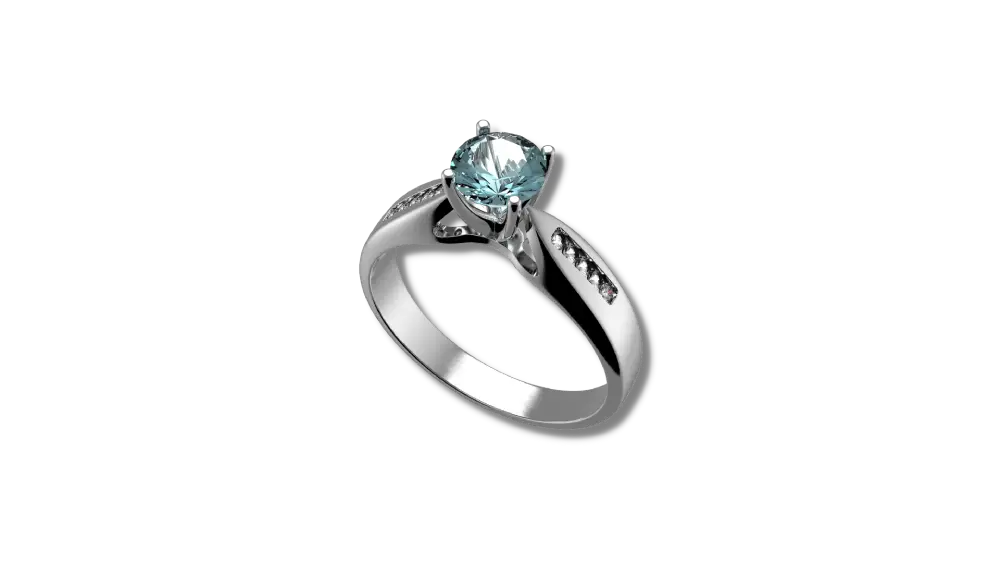
How To Take Care Of Grandidierite Jewelry?
Cleaning Grandidierite stone is a process that should be handled with care. The mineral is fragile, so handling it carefully and avoiding using harsh chemicals or abrasive materials on the stone is vital.
To clean Grandidierite:
- Use a dry brush to gently remove dirt and dust from the stone’s surface.
- You can also wipe down the stone with a cloth dampened slightly with water.
- If you want to clean your Grandidierite jewelry, soak it in warm water for about 10 minutes before scrubbing gently with an abrasive sponge.
- Be careful not to use too much pressure when cleaning your jewelry because this could cause damage to the stone or break it completely!
- Do not use chemicals (such as bleach, alcohol, and acetone), ultrasonic cleaners, or steam cleaners.
FAQ
Which Gemstones Go Best With Grandidierite?
While you can use Grandidierite in just about any kind of jewelry, it looks terrific when paired with other gems with similar colors or vibes. Here are some suggestions:
Topaz: The deep golden and blue tones of topaz are complementary to the dark green and blue tones of Grandidierite. If you’re looking for something more subtle, try pairing them with silver instead of gold.
Citrine: The yellow tones of citrine look great with the greenish-blue hues of Grandidierite. You can also try pairing this gem with rose quartz if you want something brighter.
Zircon: Zircon’s pale blue color will complement the darker blue shades found in Grandidierite. Since zircons come in many different sizes and shapes, you can experiment with different ways of wearing this combination together (e.g., as a pendant).
Is Grandidierite a precious stone?
Grandidierite is not a precious stone. However, it is a very rare gemstone. The rarity of Grandidierite makes it expensive. It can cost up to $3,000 per carat, depending on the stone’s quality.
Which Birthstone Is Grandidierite?
According to the American Gem Society, Grandidierite is not a birthstone. However, it makes for an exciting alternative to diamonds or other gemstones for those who want something different from traditional birthstone options.
Is Grandidierite Heat Treated?
Yes, Grandidierite is sometimes heat-treated to improve its color and brilliance.
Is it a good investment?
Grandidierite is a rare gemstone, and it can be challenging to determine if investing in Grandidierite is a good idea.
In terms of value, Grandidierite is relatively expensive, but it’s not as expensive as other rare gems like alexandrite or tanzanite. This means that if you’re looking for an investment that will make you money quickly, Grandidierite probably isn’t the best option. However, it has some unique properties that make it worth keeping an eye on for future investments.
Can it be synthesized in a lab?
Yes, it can be synthesized in a lab. Grandidierite is a rare mineral, so it’s not something you’ll find in your local rock shop. Grandidierite stone is only found in Madagascar, and its occurrence is limited to one particular type of serpentine rock. That means the only way to get your hands on this gem is to buy it from a seller who has mined it from the Earth.
The good news is that Grandidierite can be synthesized in a lab. The process isn’t particularly complicated—it just requires heat and pressure—but it’s still costly because of the rarity of Grandidierite in nature.


